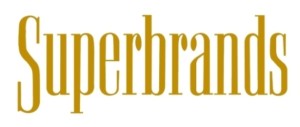
What’s a superbrand you ask? My definition is a big brand owned by a company that can afford to spend several million dollars on one single advertisement or marketing message.
Did you know that NBC brought in $4.4 – $4.5 million per 30 second ad spot during Superbowl XLIX? Is that a lot of money or what?! Whenever I’m watching the Superbowl, I’m always amazed by the ads that fly and the ones that flop. If a company is going to spend nearly 5 million dollars on one ad, it better work. And by work, I mean actually achieve the advertising objectives and align with the brand identity so consumers respond favorably. You’d think with the amount of money spent by superbrands advertising during the big game, they would remember to include a call to action, hashtag and make sure the content positively supports their brand. Well that was not always the case with the brands advertising in this year’s Superbowl.
As member of the media industry, it’s fun for me to note the glaring implications concerning which brands scored big and which ones missed the mark. The lessons that resonated most were of course the same strategies that one would learn in Branding 101 class. However, it stands to reason that no matter how much of a superbrand a company is, the best practices for crafting a creative message are really basic. I’ve outlined a few of the lessons that I feel are accurate as it relates to branding that we can learn from the Superbowl ads of 2015. You will find the lessons are so simple that some simply missed it.
1. Emotion sells like a charm.
Whether it’s good emotion or bad emotion, emotion is powerful. We all know that when an ad pulls at our heart strings, we are moved in some way or another. A perfect example of a superbrand eliciting emotion was Budweiser using puppies and a handsome gentleman to sell beer. America loves dogs and who doesn’t love cute little puppies? I’d say Budweiser scored a big win with that ad. An example of a bad emotion garnered this year was Go Daddy thinking they could also use animals to get a big win the same way Budweiser has for years. Well, not so. Go Daddy’s puppy ad was so horrible, it caused animal lovers to fly into an uproar and consumers took to social media chastising Go Daddy so much so the ad was pulled before the game even aired. The problem with Go Daddy’s ad was the way it ended. In summary, a woman lost her dog, then the dog came home but she was only happy the dog returned because she had already sold the dog on line via her Go Daddy domain. The emotion that ad elicited was anger. People were furious. The ad was a big flop. Go Daddy appeared heartless and insensitive and people were outraged. Go Daddy had to pull the ad before the Superbowl game ever began and the president of Go Daddy even apologized on social media. I’d say that was a big loss because the commercial had already run, people had already seen it and the brand was already tarnished in the minds of some. The lesson is simply…not all emotion is good emotion and only good emotion sells like a charm.
2. Rise above the noise.
The best way to stand out in a sea of fish is to be the BIG fish. In order to be a superbrand you must find a way to separate your brand from all of the others which means dust your competition. A great example of standing out and rising above the noise was the Doritos ads which were a big hit. Doritos decided to involve their consumers by doing a competition and getting consumers to create ads for their brand. The prize was one million dollars for first place and even the finalists won $25K and a chance to attend the game. Can you imagine how excited Doritos fans were? Ordinary people had the chance to pull together a commercial and submit it for a chance to win a lot of money plus attend the Superbowl. Why was this such a brilliant move? Because sometimes it pays to let your customers tell you how great you are rather than you telling them. All of the ads were brilliant and well received by viewers. I’d say that was a “fly” in the face of their competition. The lesson is simply, creativity is always a good way to rise above the noise.
3. Being super means being social.
Most of the superbrands understood the importance of using social media to further drive home the message of their brands during the Superbowl. We live in the 21st century and the Internet has taken over our lives in many ways. There is almost nothing that you can’t purchase on-line. That said, utilizing social media to spark a viral explosion for your brand is quite simply a no-brainer. Most of the superbrands incorporated social media into their ads, but some did not. Some brands did not even mention Facebook or Twitter, the two largest social media platforms in the world. A total of 66 ads aired during the Superbowl in 2015. Just over 65% of those ads used a hashtag.
According to the Wall Street Journal, Budweiser had the most-shared ad across Facebook, Twitter and blogs for the third straight year, according to the Web video analytics firm Unruly. The ad, “Lost Dog,” resulted in 2,168,530 shares through Sunday, Unruly found.
To get a sense of just how important social media is today, all you need do is look at the number of people who utilized social media while viewing Superbowl XLIX. According to Twitter, 28.4 million tweets were made during the broadcast of this year’s game. Wow! That’a a heckuva lot of tweets! According to Facebook, there were 265 million posts, comments and likes during this year’s game. Wow! That’s a heckuva lot of mentions.
The lesson is simply, in today’s world if you want to be a superbrand you must master social media. (
4. A call-to-action is always important.
In watching the Superbowl, I was amazed by the companies that did not have a call to action with their marketing messages. A call-to-acton is simply an instruction to the target audience to inspire them to do something. Typical call-to-actions are: call now, buy this, visit us and these days, sometimes it’s as simple as like us on Facebook or follow us on Twitter. However, it seems that many of the superbrands failed to ask us to do anything this year. It only stands to reason that if your company is going to spend upwards of 5 million dollars on one ad that you’d at least want to ensure a return on investment by asking the people who view the ad to take an action of some sort.
To get a sense of just how important having a call to action is, you simply need to gauge which brands got the most buzz in the media, particularly on-line. The simplest way to do that is of course analyzing social media ROI. According to the Wall Street Journal, regarding social buzz, “aside from generic, game-related hashtags like #sb49, Bud was also responsible for the top hashtag, found Brandwatch. The Budweiser ad-themed #bestbuds generated over 104 million impressions during the game, far more than any other brand (for example, the new ‘Jurassic Park’ ad generated over 17 million impressions for its hashtag #jurassicworld).”
The lesson is simply this, when you ask your target audience to take action, chances are they will and when you don’t they won’t.
The above lessons are quite simple. However, my question is; “if it’s so simple why aren’t all of the superbrands using these very basic strategies? Why do some brands fly and others flop? I suppose the best answer is because no matter how super the brand is, each brand is managed by group of people who are just imperfect human beings trying to do the best they can at their given job. We live and learn…don’t we?
Finally, the lesson I will leave you with is this: no matter how super your brand is and how big your company gets, always remember the thing that will keep you on top is usually something as basic as 1-2-3, keep it simple.
Copyright © 2015 Quality Media Consultant Group LLC
Want to use this article for your website or blog? No problem. Here’s what you must include:
Lori A. Manns is an award-winning, marketing, sales coach and business strategist who works with small business owners to help them elevate their brand, get more clients and grow revenue. Lori A. Manns is CEO of Quality Media Consultant Group and founder of the Trailblazer Business Academy™ where advancing entrepreneurs go to learn business growth strategies the soulful way. Lori is also the creator of Sponsorship Sales Secrets System;™ that shows you how to get more sponsors and sales for your business, guaranteed. To purchase consulting services on marketing, advertising or sales and, learn how to increase your revenue and grow your business; please visit the start here page on www.qualitymediaconsultants.com.
